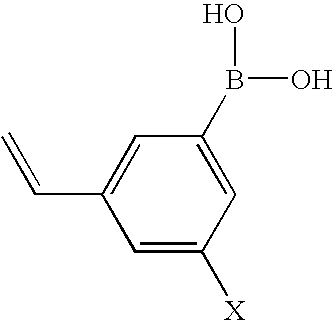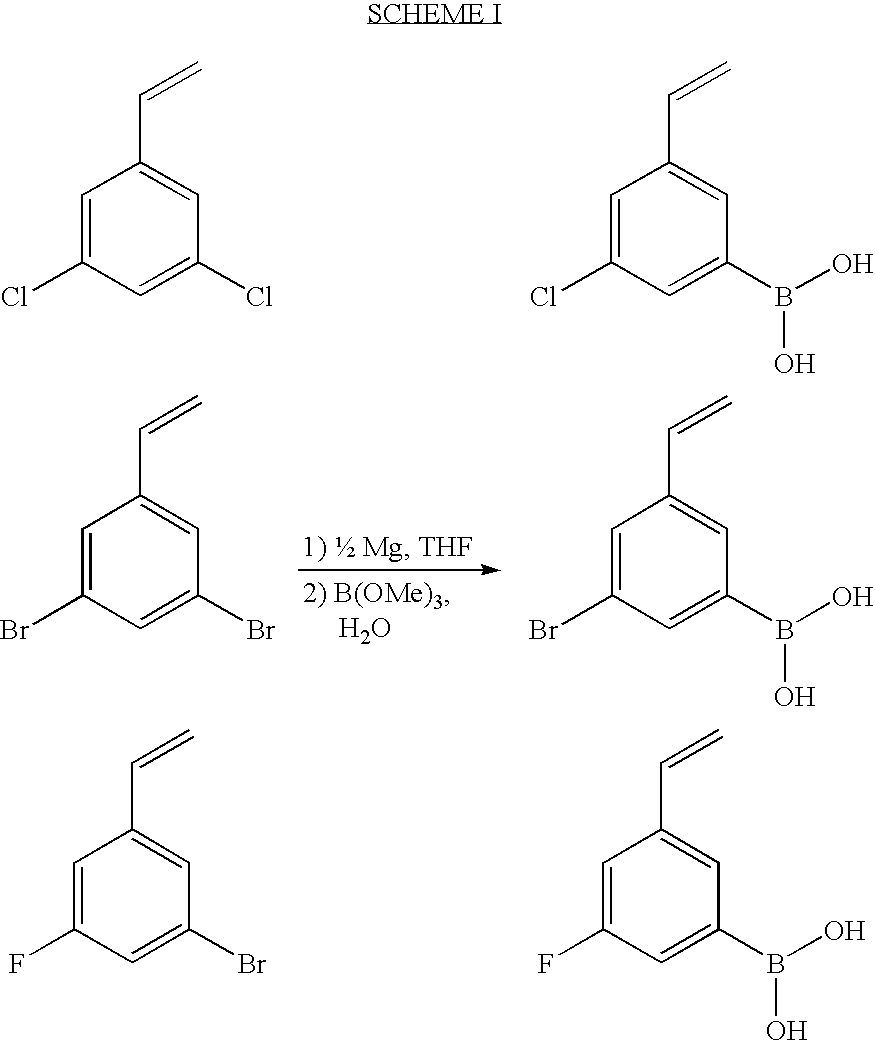Packaging Solutions
a technology for ophthalmic devices and packaging solutions, applied in the direction of packaging goods, liquid handling, instruments, etc., can solve the problems of reducing shelf life and/or adverse reactions, limited the use of surfactants in packaging solutions, and many people who wear contact lenses still experience dryness or eye irritation, so as to preserve the sterility of the solution and the ophthalmic device, and improve the lubricity and/or wettability of the lens
- Summary
- Abstract
- Description
- Claims
- Application Information
AI Technical Summary
Benefits of technology
Problems solved by technology
Method used
Image
Examples
example 1
Preparation of a Contact Lens
[0103]Mixtures were made by mixing the following components listed in Table 1, at amounts per weight.
TABLE 1IngredientWeight PercentPolyurethane-siloxane prepolymer53TRIS15NVP33HEMA5HEMAVC1Boronic acid monomer1N-hexanol15Vazo-640.5IMVT150 ppm
The resulting mixture is cast into contact lenses by introducing the mixture to a mold assembly composed of an ethyl vinyl alcohol mold for the anterior surface and an ethyl vinyl alcohol mold for the posterior surface and thermally curing the mixture at 100° C. for 2 hours. The resulting contact lens is released from the mold, extracted with isopropyl alcohol for 4 hours and placed in a buffer solution. The boronic acid monomer used in this example is of the formula:
wherein X is —NO2.
example 2
[0104]The lenses of Example 1 are placed in polypropylene contact lens blister packs containing a buffered saline solution containing 1% by weight of a copolymer of DMA / VDMO. The blisters are sealed and autoclaved for one cycle.
example 3
[0105]The lenses of Example 1 are placed in polypropylene contact lens blister packs containing a buffered saline solution containing 1% by weight of a copolymer of vinylalcohol and vinylpyrrolidone. The blisters are sealed and autoclaved for one cycle.
PUM
| Property | Measurement | Unit |
|---|---|---|
| osmolality | aaaaa | aaaaa |
| osmolality | aaaaa | aaaaa |
| hydrophilic | aaaaa | aaaaa |
Abstract
Description
Claims
Application Information
 Login to View More
Login to View More - R&D
- Intellectual Property
- Life Sciences
- Materials
- Tech Scout
- Unparalleled Data Quality
- Higher Quality Content
- 60% Fewer Hallucinations
Browse by: Latest US Patents, China's latest patents, Technical Efficacy Thesaurus, Application Domain, Technology Topic, Popular Technical Reports.
© 2025 PatSnap. All rights reserved.Legal|Privacy policy|Modern Slavery Act Transparency Statement|Sitemap|About US| Contact US: help@patsnap.com



